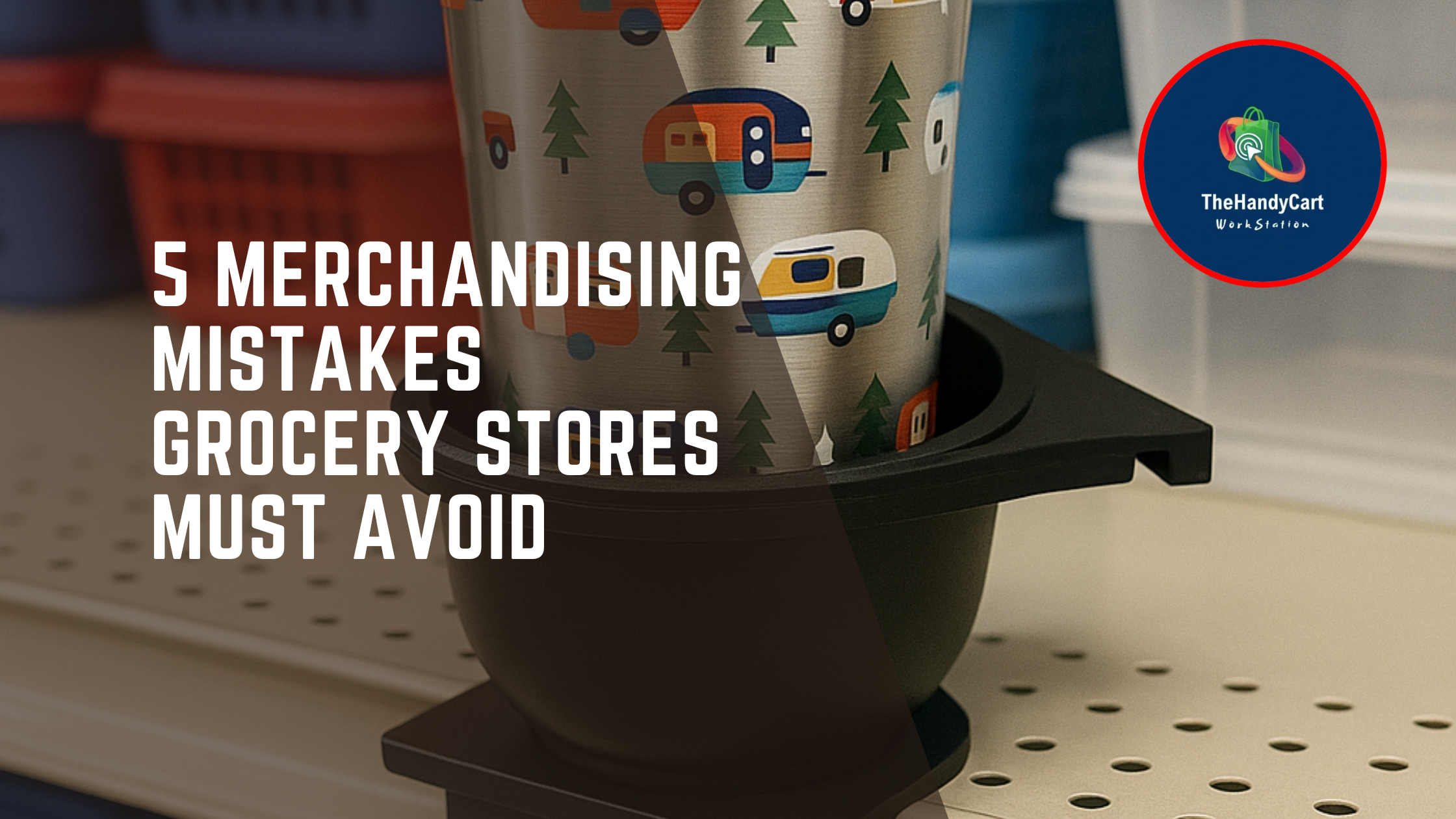5 Merchandising Mistakes Grocery Stores Must Avoid
Introduction
Merchandising is part art, part science—and mistakes in execution can erode revenue, confuse shoppers, and slow down your team. In this blog, we spotlight five common merchandising mistakes that many grocery stores make. Then, we’ll show how to correct them so your displays drive sales, not friction.
Modern solutions like scan coordinator carts, merchandise carts, and organized grocery cart organizer setups play a big role in preventing these issues. With the right grocery tools, merchandiser tools, and scan coordinator tools, teams can avoid costly missteps and improve store execution.
1. Unclear Signage
Nothing frustrates shoppers more than not knowing what something costs. When signage is missing, hard to read, or inconsistent, customers skip products altogether.
Fix it:
Use large, legible fonts with high contrast colors.
Position signs at eye level where possible.
Make sure price tags and promotional signs are aligned and updated daily.
Equip teams with better merchandiser tools to update signs consistently.
2. Disorganized Seasonal Resets
Seasonal transitions should be exciting for shoppers, but for staff, they often feel chaotic. Without a structured plan and the right tools, employees spend hours running back and forth for tags, printers, and supplies.
Fix it:
Plan resets at least 8 weeks ahead with vendor input.
Use dedicated equipment like the HandyCart Workstation™, which keeps printers, tags, and scanners together and attaches easily to most merchandise carts or scan coordinator carts.
Break resets into small, manageable zones instead of tackling the entire store at once.
3. Inconsistent Brand Displays
Shoppers trust consistency. If your displays vary from aisle to aisle, customers may not recognize a brand or feel unsure about what’s on sale. This inconsistency hurts both sales and brand relationships.
Fix it:
Follow vendor planograms carefully.
Train staff on brand guidelines so they know how to execute displays properly.
Audit displays monthly for consistency and accuracy.
Use organized systems like a grocery cart organizer to keep the right materials on hand.
4. Too Much Clutter
Overcrowded shelves don’t mean more sales—they mean overwhelmed shoppers. When every inch is stuffed, customers can’t find what they want and abandon purchases.
Fix it:
Focus on clarity, not quantity.
Use endcaps and secondary displays for promotions instead of stuffing aisles.
Rotate stock regularly to prevent shelves from looking stale.
Equip teams with better grocery tools that streamline restocking.
5. Not Empowering Staff
Employees are the frontline of execution. Without proper tools or clear systems, they get frustrated and fatigued—especially during resets. This not only lowers morale but increases mistakes.
Fix it:
Provide training on merchandising basics.
Equip staff with mobile printers, scanners, and organizational tools.
Use solutions like HandyCart to cut wasted steps and make resets faster and less stressful. HandyCart pairs well with scan coordinator tools and integrates seamlessly with the store’s merchandise carts.
FAQ
Q: Which mistake costs the most in lost sales?
A: Poor signage is one of the biggest drivers of missed sales. Shoppers often walk away when prices aren’t clear.
Q: How can I make seasonal resets less overwhelming?
A: Break them into sections, use a rolling workstation like HandyCart, and prioritize high-traffic areas first (entrances, endcaps, checkout). It also helps to attach HandyCart to existing merchandise carts for easy mobility.
Q: Do merchandising mistakes affect employee turnover?
A: Yes. Constant stress from disorganized resets and lack of tools leads to burnout. Empowering staff with proper equipment—like modern merchandiser tools and organized grocery cart organizers—makes their jobs easier and more enjoyable.
Q: Why can’t employees just use regular stocking carts?
A: Stocking carts don’t have compartments or surfaces for scanners, tags, and printers. HandyCart turns “make-do” tools into a system built for merchandising and pairs well with both stocking carts and scan coordinator carts.
Q: How frequently should I review my merchandising displays?
A: Monthly is a good rhythm—inspect clutter, lighting, signage, and alignment with planograms so you catch drift before it becomes a problem.
Q: Can small stores apply these rules too?
A: Absolutely. These mistakes scale down as well. Even a small footprint suffers when shelving is too crowded or signage is confusing. Using compact grocery tools and a versatile grocery cart organizer helps keep smaller teams efficient.
Key Takeaways
✅ Employees work better with the right tools: scanners, printers, labeling supplies, safety gear, and organized merchandiser tools.
✅ Branded merchandise isn’t just cosmetic—it builds loyalty and professionalism.
✅ The HandyCart Workstation™ turns scattered tools into one efficient system, pairing perfectly with merchandise carts, scan coordinator tools, and grocery cart organizers.
Conclusion
Merchandising is about clarity, consistency, and efficiency. Avoiding these five mistakes improves the shopping experience, boosts sales, and keeps your team motivated.
Margins in grocery are razor-thin, but improving efficiency doesn’t always mean hiring more people—it means equipping your team with the right tools. By investing in essentials like handheld scanners, mobile printers, and dedicated solutions like The HandyCart Workstation™, grocery leaders can give employees the confidence and resources they need to succeed.
👉 Explore how The HandyCart Workstation™ reduces merchandising errors and supports staff efficiency.
Updated October 6th, 2025

